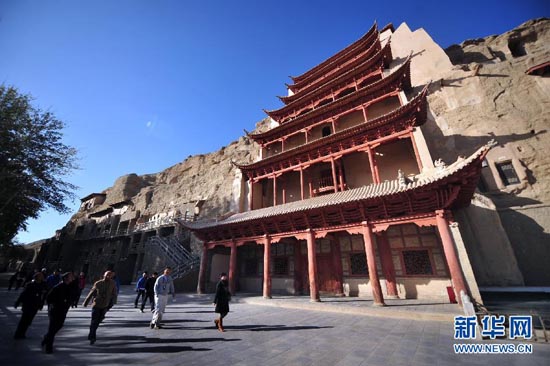
 |
Ancient Buddhist grottoes along the Silk Road in western China are treasure troves of magnificent art that show the influence of many cultures over more than 1,000 years.
Most of these sites have UNESCO World Cultural Heritage status, while others are applying.
This piece explores the Dunhuang Mogao Grottoes in Gansu Province and nearby destinations, plus offers travel advice.
Near sunset more than 1,600 years ago, a monk named Le Zun was traveling to Sanwei Mountain near Dunhuang, in today's Gansu Province. Exhausted, he decided to take a short break. As Le Zun rested, a miracle appeared in the setting sun before him: Buddha's halo.
The color-filled phenomenon on the horizon over the Gobi Desert cast its light onto Sanwei Mountain, revealing a thousand Buddhas bathed in a golden glow. Awestruck, Le Zun fell to his knees and began to pray.
Convinced that the area was a holy place, the monk raised money and built the first grotto in the cliff face opposite the mountain, dedicating it to the Buddha.
From this starting point in AD 366, hundreds of grottoes were built on the site over more than 1,000 years; from the Northern Wei Dynasty (AD 386-557) to the Qing Dynasty (AD 1636-1911), when minor repairs took place.
The vision seen by a weary traveler led to the creation of one of the largest and greatest cultural and historical sites in the world: the Mogao Grottoes.

















 Sanitation worker, environmental protector in city
Sanitation worker, environmental protector in city


![]()
